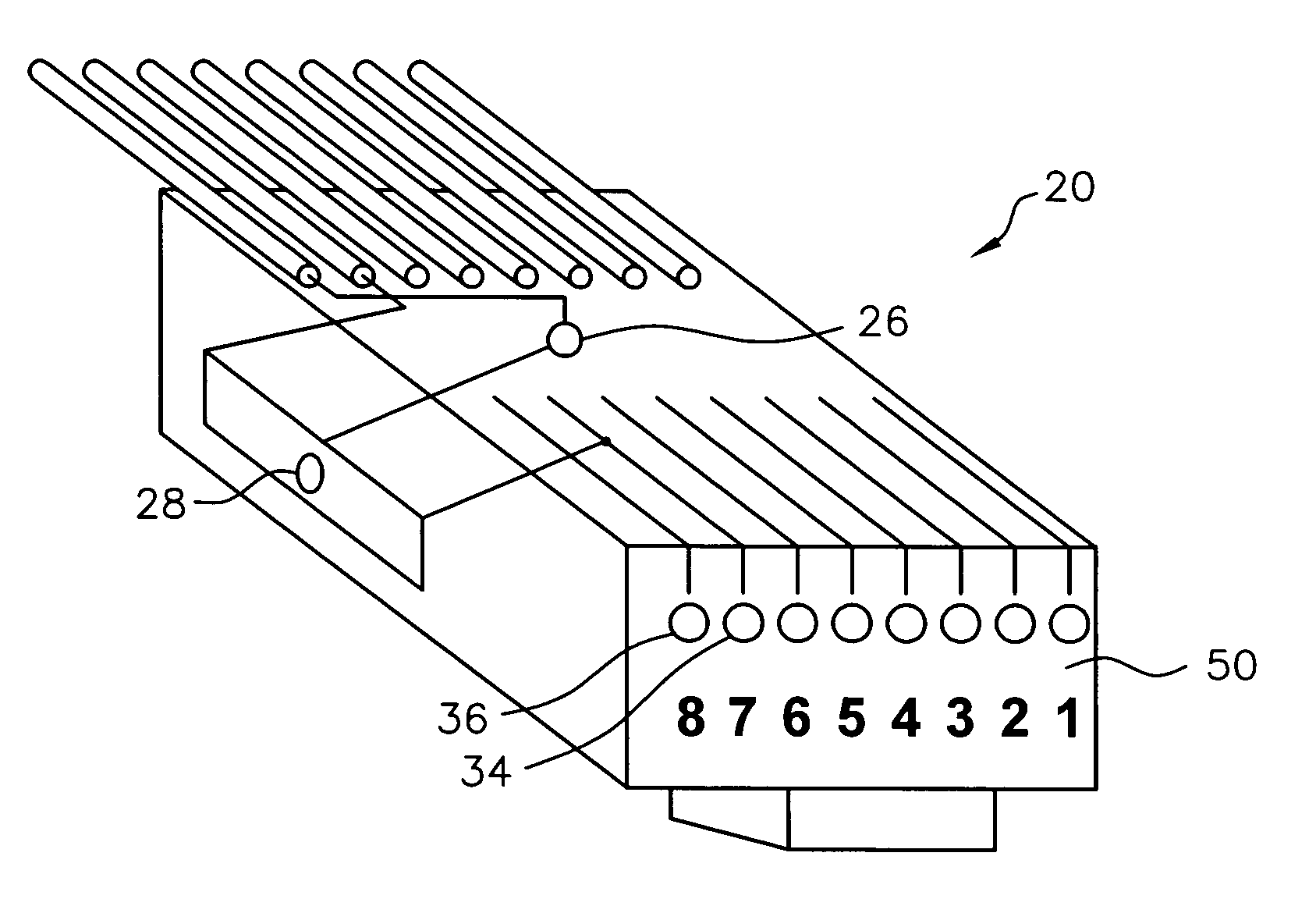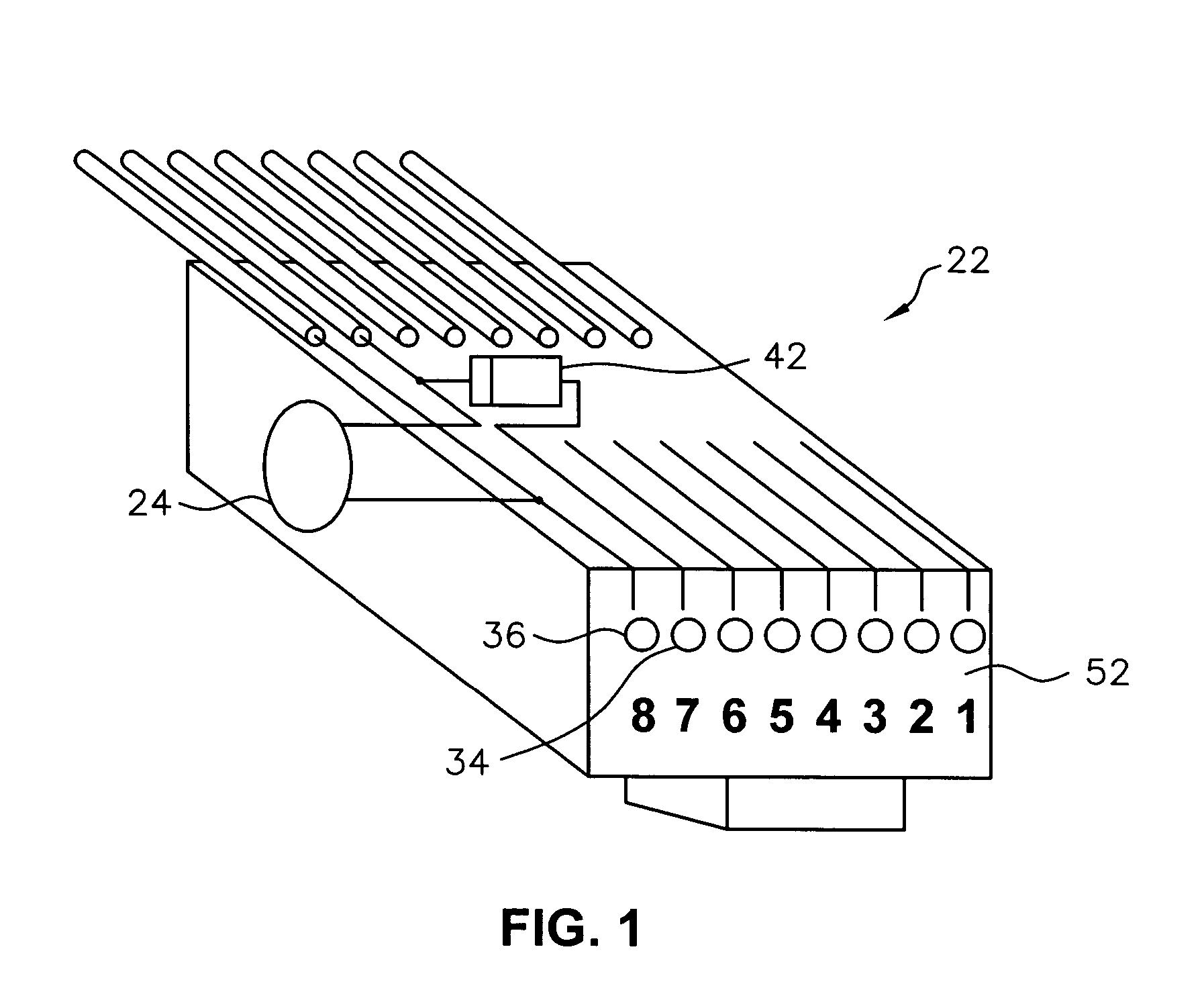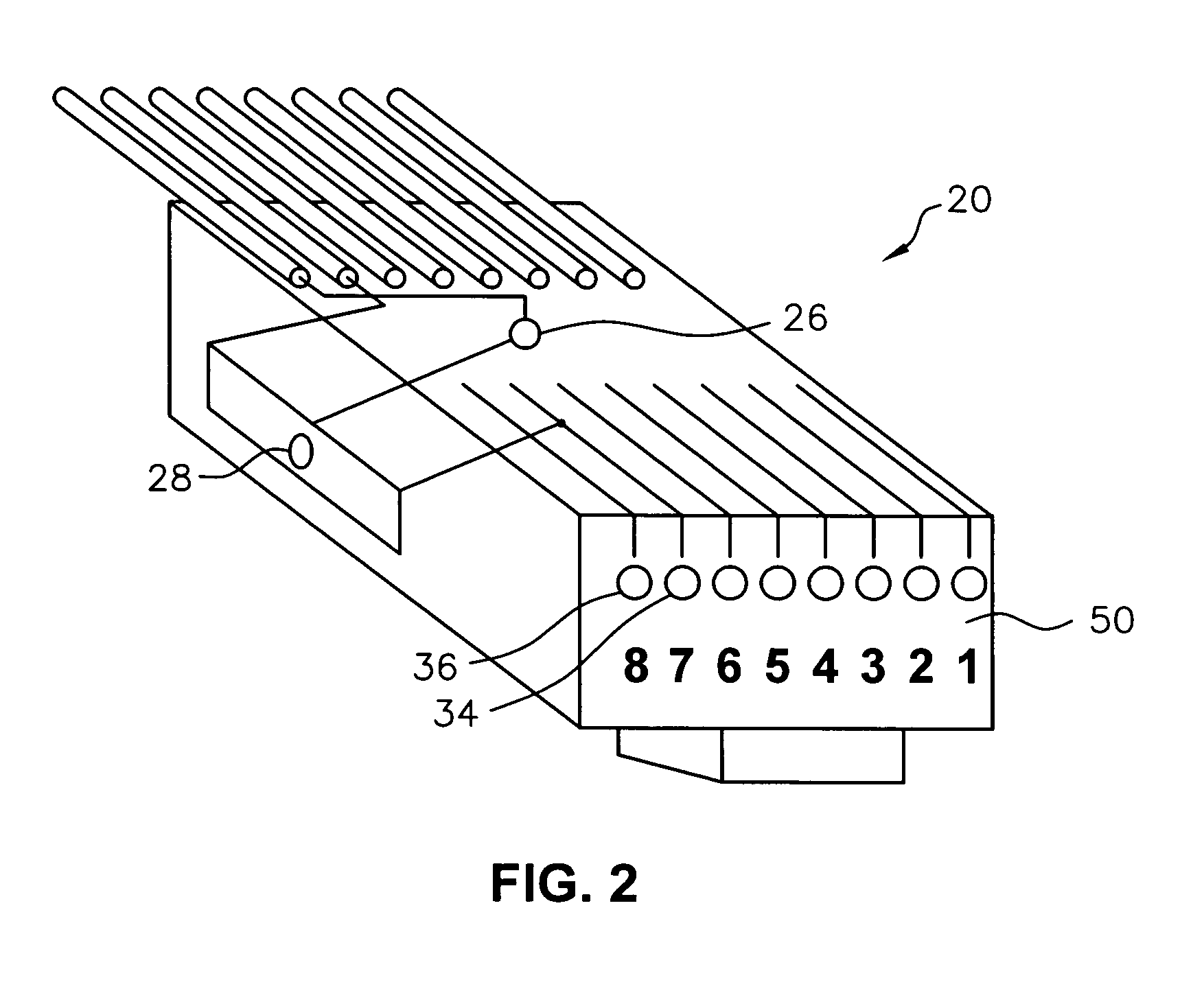Patch cable physical link identification device
a physical link identification and patch cable technology, applied in the direction of electrical discharge lamps, substation equipment, coupling device connections, etc., can solve the problems of difficult to differentiate between the groups of cables within one category, difficult management of network closets where connecting cabling generally converges, and inability to be permanen
- Summary
- Abstract
- Description
- Claims
- Application Information
AI Technical Summary
Benefits of technology
Problems solved by technology
Method used
Image
Examples
Embodiment Construction
[0031]And now the invention shall be described in terms of the preferred embodiment utilizing various figures provided wherein like-numbers refer to like-parts. The invention may be applied in two different, but generally similar embodiments depending on the application and convenience desired in the use of the cables to which the inventions are applied. FIGS. 1 and 2 present the internal configuration of a complimentary pair of RJ45 type modular connectors which are used in the first embodiment of the invention where complete compatibility to the power over ethernet protocol remains available where a user may desire to apply the invention in such an environment.
[0032]FIG. 3 is a schematic diagram illustrating the typical configuration of a telecommunications interconnect cable for data or voice devices which contain a visual identification component for the purposes of identification of the opposite end of the termination of a given individual cable. For purposes of clarity, it sho...
PUM
 Login to View More
Login to View More Abstract
Description
Claims
Application Information
 Login to View More
Login to View More - R&D
- Intellectual Property
- Life Sciences
- Materials
- Tech Scout
- Unparalleled Data Quality
- Higher Quality Content
- 60% Fewer Hallucinations
Browse by: Latest US Patents, China's latest patents, Technical Efficacy Thesaurus, Application Domain, Technology Topic, Popular Technical Reports.
© 2025 PatSnap. All rights reserved.Legal|Privacy policy|Modern Slavery Act Transparency Statement|Sitemap|About US| Contact US: help@patsnap.com



